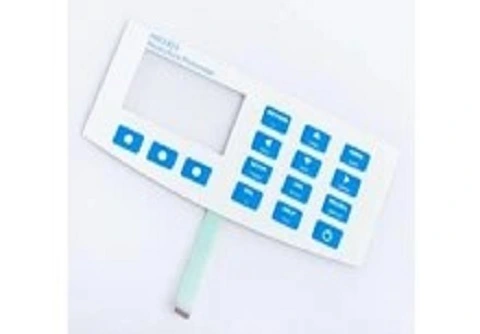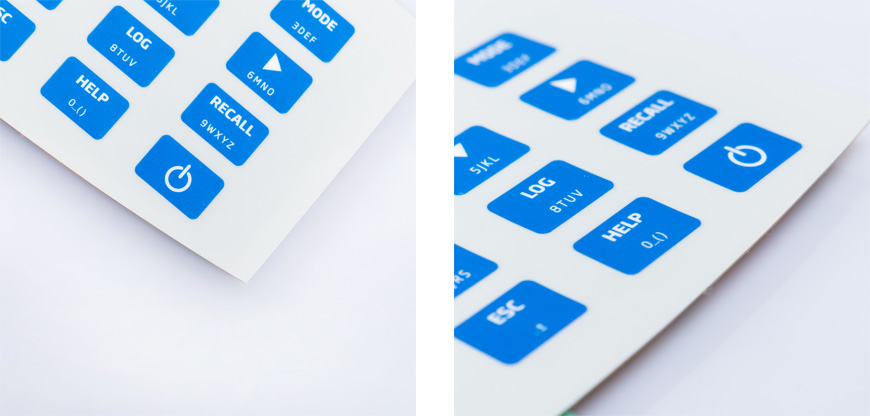
In the ever-evolving world of technology, tactile membrane switches have become a crucial component in various electronic devices. These switches offer a unique combination of reliability, affordability, and versatility, making them indispensable in industries ranging from consumer electronics to healthcare equipment. In this article, we will delve into the world of tactile membrane switches, exploring their design, applications, advantages, and more.

Tactile membrane switches are an integral component of many modern electronic devices. These switches provide tactile feedback to users, allowing them to feel a physical response when pressing a button. This feedback enhances the user experience, providing a more intuitive and reliable interface. The tactile nature of these switches makes them particularly useful in applications where user interaction is frequent and precision is required.
Tactile membrane switches are commonly used in a wide variety of industries, ranging from consumer electronics to industrial machinery and medical devices. They are known for their cost-effectiveness, durability, and versatility, making them a go-to choice for both consumer products and high-tech equipment.
Tactile membrane switches function based on a simple but effective mechanism. The core operation of a tactile switch involves multiple layers, including conductive traces, graphic overlays, and spacer layers. When pressure is applied to a key on the membrane, it forces the layers to make contact, completing an electrical circuit and activating the switch.
The unique aspect of tactile switches is the inclusion of a tactile dome or rubberized material under each button. When pressed, this dome compresses slightly, giving the user a “click” sensation, which serves as tactile feedback. This feedback confirms to the user that the switch has been engaged, improving accuracy and usability.
The key components that make up a tactile membrane switch are:
Graphic Overlay: The top layer, typically printed with labels or symbols, provides a visual guide to the user.
Spacer Layer: Separates the upper and lower circuit layers while ensuring proper alignment and preventing accidental contact between circuits.
Conductive Circuit Layer: Contains conductive traces that connect the circuit beneath the switch. When pressure is applied, these traces complete the electrical connection.
Tactile Dome: The key element that provides the physical "click" or feedback when a button is pressed.
In consumer electronics, tactile membrane switches are widely used for products like remote controls, microwave ovens, home appliances, and gaming controllers. The tactile feedback ensures that users know when a button has been pressed, enhancing the overall user experience. These switches are also preferred for their low-profile design, which is crucial for compact devices.
Their versatility in terms of customization also makes them popular in consumer products. Manufacturers can design tactile membrane switches that align with branding, fit into specific designs, and provide distinct feedback for various functions.
In industrial applications, tactile membrane switches are used in control panels, machinery, and heavy equipment. These switches are often exposed to challenging environments, such as dust, moisture, and extreme temperatures. Tactile switches are preferred in such applications because they provide reliable feedback even under harsh conditions, reducing the likelihood of operator error. Additionally, their durability and resistance to environmental factors make them ideal for industrial settings where switches are used frequently.
Tactile membrane switches are essential in healthcare devices, such as medical monitors, diagnostic equipment, and portable medical devices. The clear tactile feedback ensures that healthcare professionals can operate medical equipment with precision, even in fast-paced environments. These switches also benefit from being easy to clean and resistant to contamination, which is critical in medical applications where hygiene is paramount.
One of the key benefits of tactile membrane switches is their cost-effectiveness. Compared to traditional mechanical switches, membrane switches are generally less expensive to produce. Their simple construction, combined with modern manufacturing techniques, makes them an affordable solution for both high-volume and low-cost applications.
Tactile membrane switches can be customized to fit the specific needs of any application. This includes variations in button size, layout, graphic overlay design, and tactile feedback intensity. Additionally, switches can be designed to match the aesthetic requirements of a brand or product, providing a tailored solution for manufacturers.
The tactile feedback provided by these switches offers a clear indication that the button has been activated. This not only enhances the user experience but also helps reduce user errors, making tactile switches ideal for applications where precision is important. The "click" sensation also provides a more satisfying, ergonomic interaction, making these switches easier to use for extended periods.
Tactile membrane switches are highly durable and resistant to environmental factors such as moisture, dust, oils, and extreme temperatures. This makes them suitable for use in industrial environments, automotive controls, medical devices, and outdoor applications, where switches must withstand tough conditions and continue to function reliably.
The robust design of tactile membrane switches ensures that they can withstand millions of key presses without failure. Their durability makes them a long-lasting solution for applications where frequent use is expected. The materials used in their construction (such as polycarbonate and polyester) are resistant to wear and tear, ensuring that the switches maintain their tactile feedback and functionality over time.
With the rise of smart devices and the Internet of Things (IoT), tactile membrane switches are being integrated with smart technology. These switches will increasingly be used in applications where connectivity and remote control are important, such as smart home systems and wearable technology.
The demand for highly customized user interfaces is on the rise. In the future, tactile membrane switches will offer even more options for customization in terms of design, color, feedback intensity, and integration with other technologies. This will allow manufacturers to create more intuitive and personalized user experiences for a wider range of applications.
As sustainability becomes a key focus in manufacturing, we can expect to see more eco-friendly materials being used in the production of tactile membrane switches. These materials will be recyclable, reduce the environmental impact of production, and ensure that the switches remain durable and reliable.
Q: Are tactile membrane switches suitable for outdoor applications?
A: Yes, they are resistant to environmental factors and can withstand outdoor conditions.
Q: Can I customize the appearance of a tactile membrane switch for my product?
A: Absolutely, manufacturers offer extensive customization options for graphics and design.
Q: How long do tactile membrane switches typically last?
A: These switches can last for millions of actuations with proper maintenance.
Q: Are membrane switches more cost-effective than mechanical switches?
A: Yes, membrane switches are generally more affordable to manufacture.
Q: What are the main advantages of using tactile membrane switches?
A: The main advantages include cost-effectiveness, customization options, and tactile feedback.